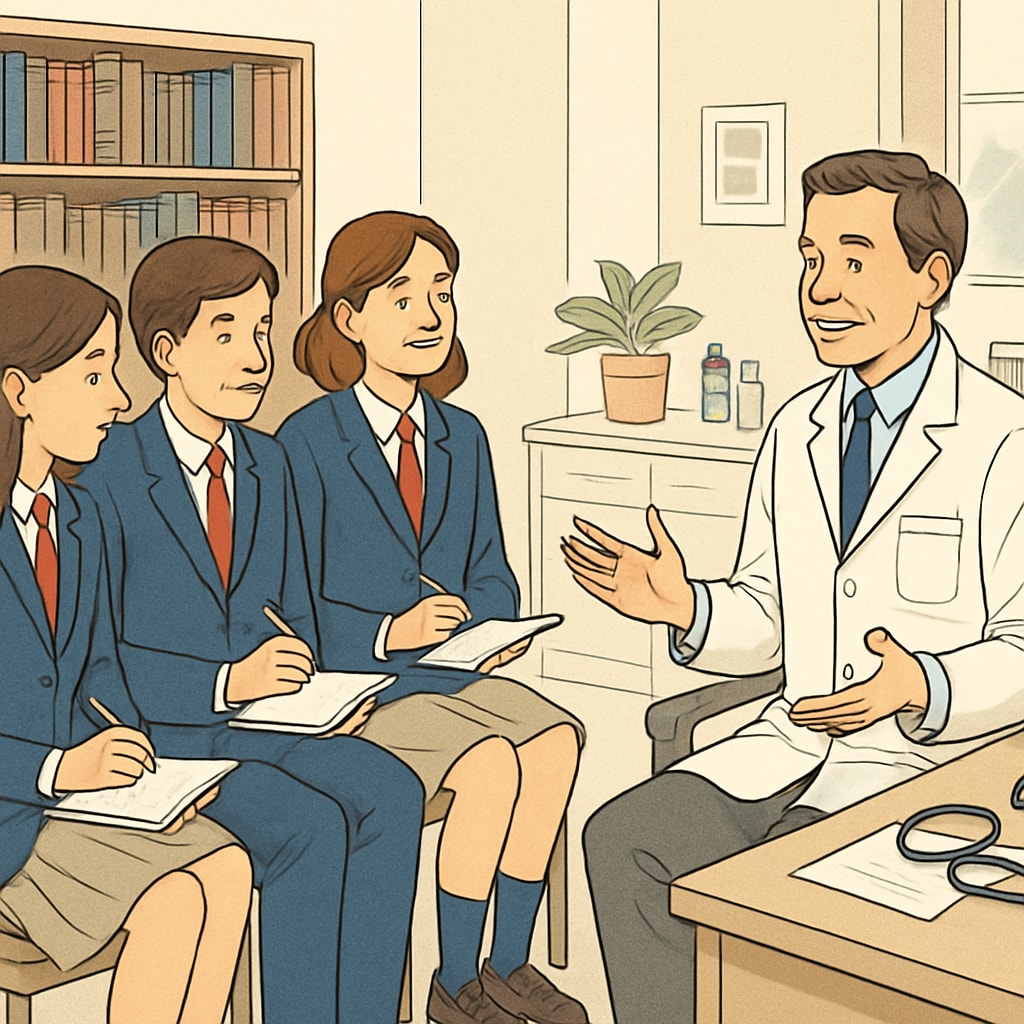Understanding the world of medicine can be daunting for young students. Engaging in structured medical career interviews is a powerful way for K12 students to explore their career aspirations. By connecting directly with healthcare professionals, students gain firsthand insights into the realities of medical professions, shaping their career planning and understanding of the field. This article provides a practical framework for designing effective medical career interview guides, emphasizing the importance of these discussions in fostering informed decision-making.
Why Medical Career Interviews Matter
Medical career interviews allow students to bridge the gap between aspiration and reality. For example, a student interested in becoming a surgeon may hold preconceived notions about the profession, but speaking with an experienced surgeon can offer clarity about the challenges, rewards, and necessary skills. These interactions cultivate a deeper understanding of the medical field, helping students align their interests and abilities with their career goals. According to Britannica, the complexity of modern medicine requires both technical expertise and a human-centered approach, which can be better understood through direct conversations.

How to Design Effective Interview Questions
Creating a well-rounded set of questions is key to maximizing the value of medical career interviews. Here are some categories to consider:
- Personal Journey: “What inspired you to choose a career in medicine?”
- Day-to-Day Life: “What does a typical day in your role look like?”
- Challenges and Rewards: “What are the most rewarding and challenging aspects of your work?”
- Preparation and Skills: “What skills or attributes are essential for succeeding in your field?”
- Advice for Aspiring Professionals: “What advice would you give to a student considering a career in medicine?”
Such thoughtful questions ensure that students not only learn about the profession but also build a realistic picture of the path ahead. For additional examples of question frameworks, the Healthcare profession page on Wikipedia provides useful insights into various roles and their requirements.

Implementing Career Interviews in School Programs
Integrating medical career interviews into school programs can be transformative for students. Schools can organize career days, invite guest speakers from the healthcare field, or even arrange virtual interviews to accommodate professionals with tight schedules. Here are some practical steps:
- Identify Healthcare Professionals: Reach out to doctors, nurses, or other practitioners willing to participate.
- Prepare Students: Provide background knowledge about the interviewee’s role and guide students in creating thoughtful questions.
- Facilitate Interaction: Ensure students have a structured format for the interview and encourage active engagement.
- Follow Up: Encourage students to reflect on the interview experience and document their learnings.
In addition, schools can collaborate with local hospitals and clinics to provide experiential learning opportunities, such as job shadowing programs, for students eager to explore the medical field further.
Conclusion: Shaping Future Medical Professionals
Medical career interviews are more than just conversations—they are gateways to understanding the intricate and rewarding world of medicine. By designing structured and insightful guides, educators can empower students to make informed career decisions, fostering a generation of compassionate and skilled healthcare professionals. Whether through direct interactions or organized programs, these initiatives can profoundly impact students’ career trajectories, opening doors to a meaningful future in medicine.
Readability guidance: This article uses concise paragraphs and lists to enhance readability. Transition words like “for example,” “in addition,” and “as a result” ensure smooth flow between ideas. The focus remains on actionable insights for educators and students.


